MY first stop was the capital city, Havana. It was coming up to New Year’s Eve and I was excited to see how Cubans celebrated. Well let me tell you it sure comes alive — the melodic tunes of salsa beats were everywhere, salsa on the streets and salsa in the houses! It was amazing!
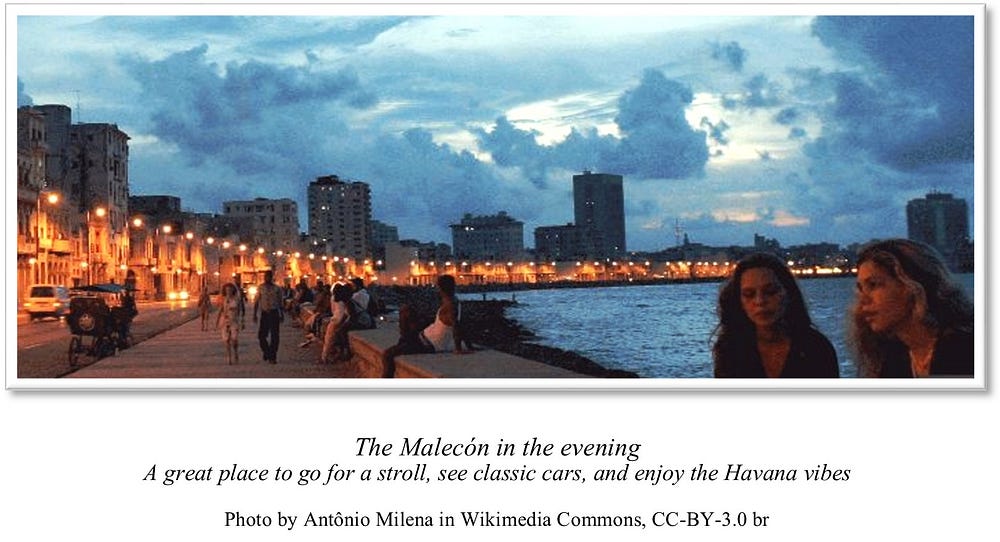
I stayed in a Casa Particular, a term used to describe a guest style house where you live with a local family and help them out. The lady I stayed with was Mikalena, who was awesome — she spoke English and was very informative.
There are a little over 11 million people living in Cuba. 3,000 of them are American citizens and every year 4 million tourists visit Cuba, whereas several years ago only 250,000 tourists visited. There is a dual currency system in which tourist are expected to use a ‘convertible’ or CUC peso, pegged to the US dollar at the rate of one to one (animosities between the two countries notwithstanding), while locals use the CUP peso, a purely local currency for local services.
The history of Cuba is fascinating and one of the first places I visited was the revolutionary museum. I found very enthralling. It also showed me where and why the revolution took place, which was interesting. It was all about Fidel Castro, a revolutionary who along with his brother Raoul Castro and backed by a number of Cuban revolutionaries overthrew the Fulgencio Batista government (which was backed by the United States of America) in 1959. Beginning in 1953 Castro led 150 men to take over the government. He was caught, imprisoned for 15 years, and many of his men shot. Exiled from his homeland, he fled to Mexico where he met fellow revolutionary Ernesto “Che” Guevara. They sailed for Cuba with 81 men on board the boat Granma, where the local authorities were waiting for them. Only 18 of them survived and they fled deep into the Sierra Maestra Mountains where Castro, his brother and Guevara trained men, and built up their following again.
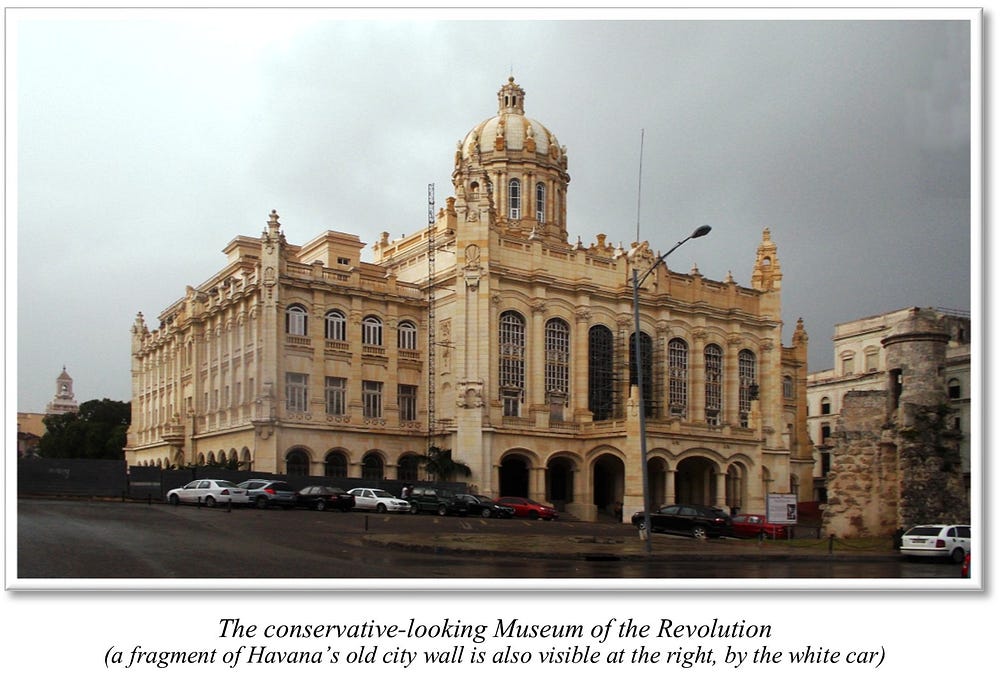
Eventually Castro gained the upper hand and declared himself president in 1959. Castro upset relations with the United States when he nationalised all US owned businesses. The United States then gave the CIA permission to attack Cuba in the infamous Bay of Pigs (Bahía de Cochinos), which ultimately failed. Cuba had strong relations with the Soviet Union, and adding to the fears of the US they discovered nuclear missiles had been stored in Cuba, which is only 103 miles (166 kilometres) from Florida at its closest point, or a little further from Miami.
Castro made some pretty hefty changes in legislation, he limited the private land people could own, eradicated private Cuban businesses which led to two million Cubans immigrating to Miami in the US giving rise to a neighbourhood called ‘Little Havana’. In 2008 he resigned and gave presidency to his brother Raúl. For the people left in Cuba he is a hero and the museum shows Fidel in a positive light. I had to admire the military skills of Fidel Castro (who I also thought was quite a good looking man!), although I hope we never get that close to war again!
Raúl will stand down in 2018, and a one-party election will take place — which doesn’t seem to be a problem as there are many candidates with different views. Many Cubans don’t want another Miami, as part of the thawing of relations with the USA, Americans can now travel to Cuba although there are many restrictions when they do. Prior to Barack Obama relaxing this law, Americans were not permitted to travel to Cuba because of the permanent embargo enacted by John F Kennedy in 1962.
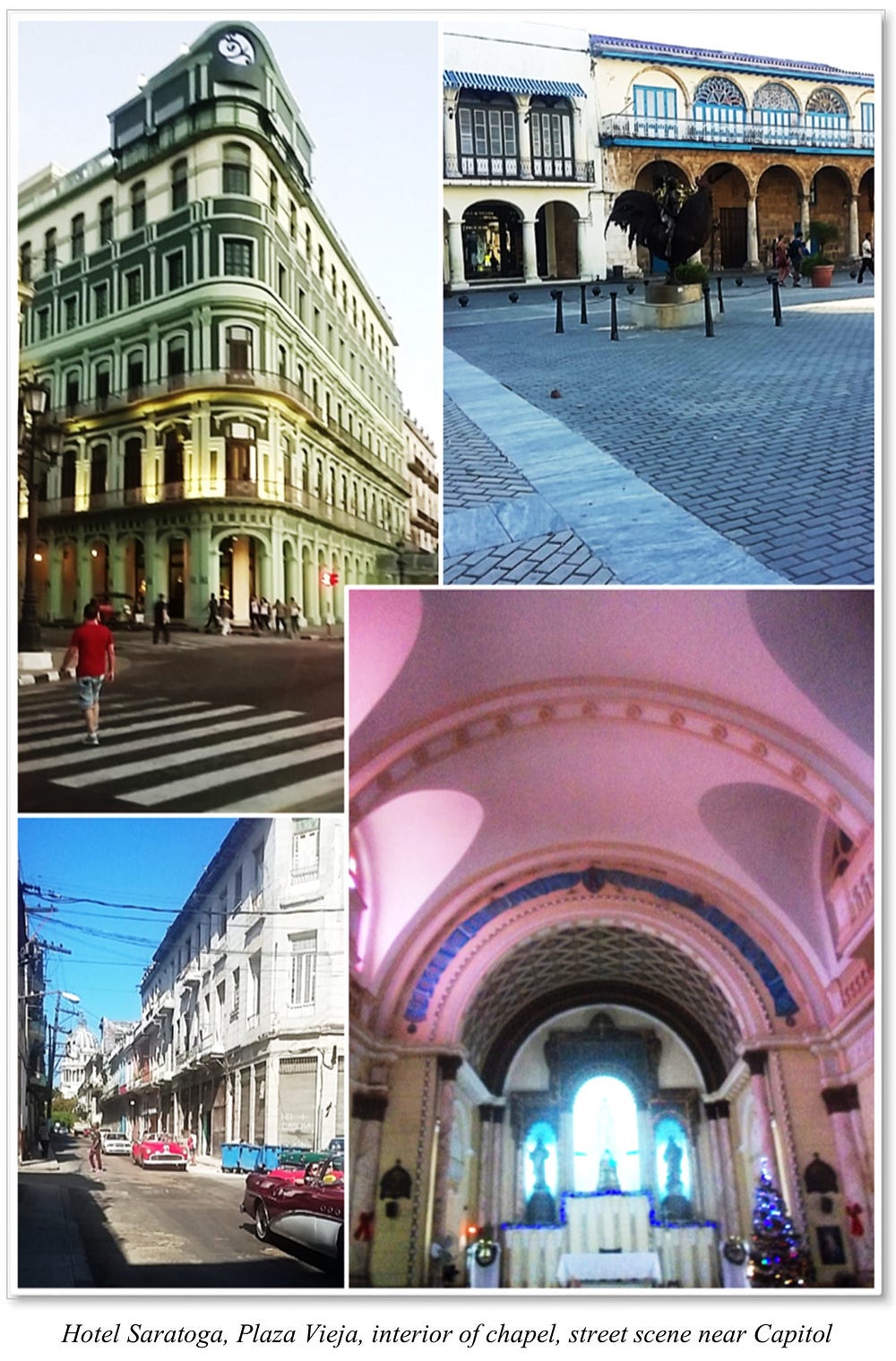
Wandering around Havana I was amazed at the society it had evolved into. There were no beggars, no homeless people. Yes the wages were low, but it seemed everyone had somewhere to live. Travelling around Cuba was easy and cheap, mostly by bus. There were all these pastel-coloured homes and buildings and these fabulous cars all from the 1950s! It is a stunning place, it really feels like you’ve gone back in time!
The availability of Wifi is very limited and you only get 30 minutes with very limited data! I couldn’t access Google Drive because it was too big, which was frustrating at first, and why my blog has nothing on Cuba until now! Wifi is not everywhere yet and social media is an entirely different topic! Social control is in line with that of China, it is monitored and controlled. It is funny after just being in the USA who now has a president who tweets to the masses as his main method of communication, the availability of Wifi will come and so will more change.
But after a while I got used to the lack of Wifi and loved the fact that I wasn’t distracted by work — it actually became a real good holiday!
I saw churches everywhere — it seemed Christian people were allowed to practise openly and were not suppressed.
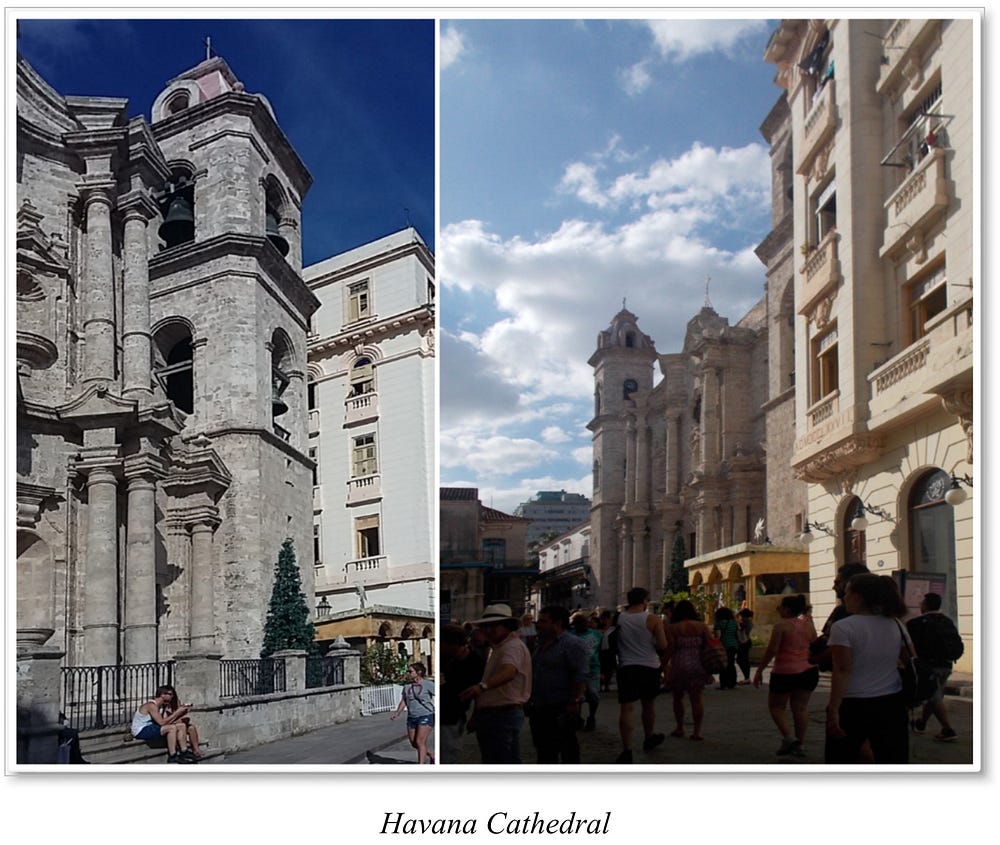
One of the first places I visited after Havana was the actual Bay of Pigs itself, or more precisely the nearby town of Playa Girón, which is where most of the action actually happened, and where the government maintains a museum of the episode.
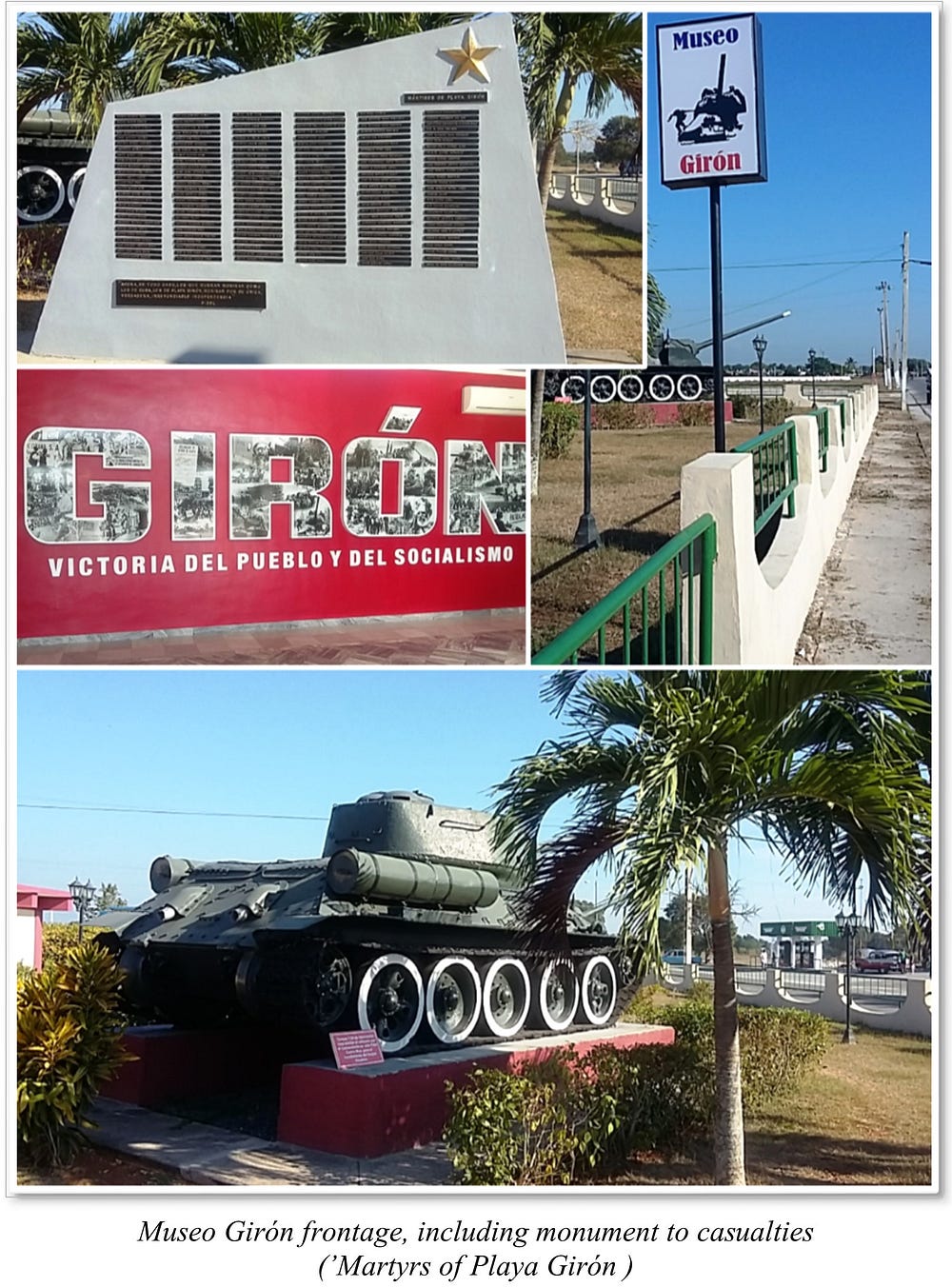
I also found evidence of the African Voodoo (or Vodou) religion around the island in its local form, which is called Santería. There were small shrines with dolls and shells which was really interesting! Apparently people from Haiti had been brought to Cuba by the Spanish as slaves. The Haitians, originally from Africa, brought the practice with them.

Cuba was first discovered, from a European point of view, by Christopher Columbus in 1492. Locals told me about a wooden cross he erected when he arrived although I’m not sure if it’s still there today. He arrived in the area of Bariay Bay, an area in the northeast of Cuba. Cuba was invaded, and lived under Spanish rule from the early 16th Century until the end of the 19th Century, becoming the world’s largest producer of sugar. Along with later arrivals of Africans, the Spanish also enslaved the indigenous people, of whom the most numerous were the Taíno. Most of Cuba’s indigenous people either perished from ill-treatment and European diseases, or were assimilated into a blended population: only a few words of Taíno are still known today. I visited one of the caves that was is a burial site of the slaves; that put a damper on things.
Buena Vista Social Club!
I was spending 21 days in Cuba. I saw the Buena Vista Social Club, and then went on to Varadero Beach, to the city of Cienfuegos, and then Playa Girón. After that I went to Bayamo and to the Sierra Maestra Mountains (including Pico Turquino), and then on to Santiago de Cuba.

After Bayamo I had had enough of cities for the moment and so I booked an excursion to go see Fidel’s revolutionary hideout in the Sierra Maestra mountains. I was able to actually walk right up into the mountains and see the hideout where Castro directed his revolution for three years after getting off the boat. That was really amazing to see! They called it the Comandancia de la Plata, high up in the Gran Parque Nacional Sierra Maestra and covered by dense bush and forest. It was from here that Fidel conducted attacks on the rural patrols in the area and finally at Batista himself.
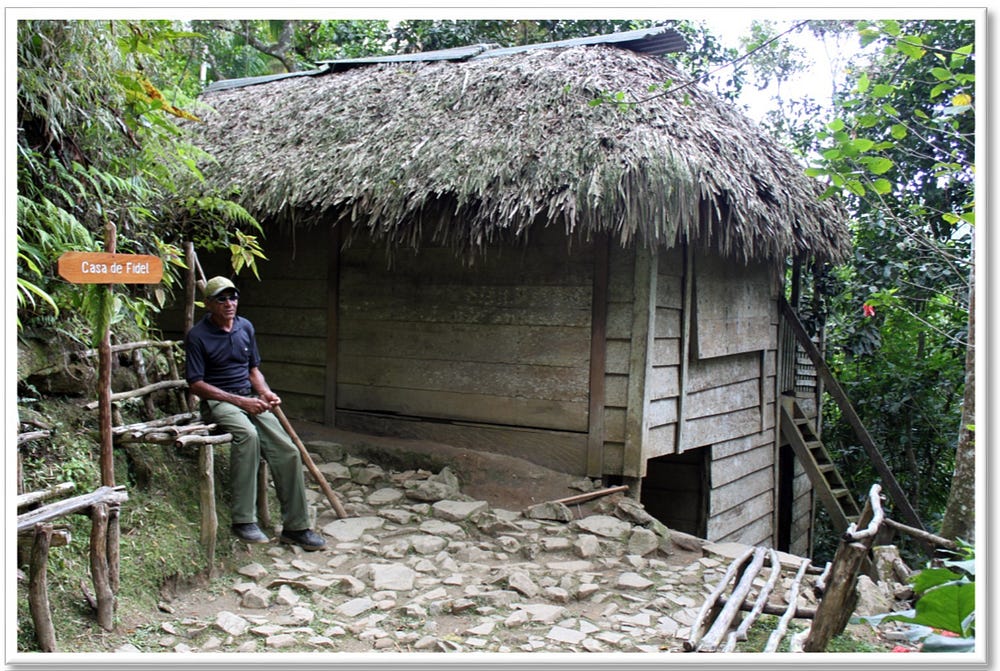

The locals loved Che Guevara — there were more pictures of him around the Fidel — another interesting note!
I learned about Cuba’s strong ties with Louisiana in Florida, Louisiana was also under Spanish control in the 17th Century and many Cubans settled there and were then cut off from one another during the embargo. Nowadays Louisiana is pressing for open trading with Cuba, as Cuba will import millions of dollars’ worth of food from them alone.
I decided to climb the highest peak in Cuba, Pico Turquino, which was just under 2,000 metres. The day we left the wind howled and the rain poured; it was almost cancelled. My guide was great. His name was Rolando. He had two children and his wife was a social worker.
There was a group of us: Rolando, myself, one Australian (who was dressed in a tee-shirt and shorts) and three Frenchmen. We left at 11 in the morning. The sky threatened rained but didn’t, thank goodness! My other thank goodness moment was that I had packed my merino top, long pants and my sleeping bag — even though the Aussie guy laughed at me and told me I’d be fine.
Well it was 8 degrees Celsius by the time we were two-thirds of the way up, and the Aussie guy froze his butt off. We stayed in a hut, which was great, and Rolando showed me a lot of the plants along the way: orchids and bromeliads. They were beautiful. And even more beautiful was the stunning array of birdlife I saw all along the trail. I saw the national bird, the Cuban Trogon; and nightingales, woodpeckers and these tiny insect-like hummingbirds, which really became a highlight of my trip! There were a lot of tree ferns and mosses around which Rolando pointed out to me and I thought they looked just like the ones in New Zealand.


I got a local Cuban perspective from Rolando, who accompanied me up the mountain. It was an interesting three hour discussion after two days of getting to know each other. He told me his father and brother lived in a poorer part of Havana and couldn’t make enough money from farming so he set out to be a tour guide. His father wasn’t well and that was why he started up smoking, he told me — must be the stress of it all.
The first time Rolando went up the mountain was with his father when he was 16 years old. So, after all the family income issues, he took up tour guiding. He made the equivalent of $20 US a month and supplemented his income with tips — which the guides definitely need!
On another tour I did, we were taken to a coffee house, where the lady showed us her coffee bean farm and then also served us all coffee. The tour guide offered to take photos of us all and then charged us $5 US for taking the photos. I refused to pay the guide and instead gave my money to the lady who gave us the coffee, it was only $2 US but her grin was as wide as if I had given her 10! Tipping is something I would highly encourage you to do if you do go to Cuba — it’s the main way they get money and I think it is definitely needed!
Raúl Castro has made some recent changes to Fidel’s legislation so that people can now own two houses, one in the city and one in a rural area. The government also now allows people to run their own private businesses like taxis and the Casa Particulares. I even met a woman who owned a part of the only chocolate factory in Cuba. I don’t know what part of it she actually owns, whether it was the farm or the right to conduct tours, but it was interesting.
I went to Baracoa, a beautiful area not far from Guantánamo. I thought it was a little more relaxed there and there were more indigenous people, which was good to see after so many perished or been assimilated under the Spanish. I had heard of the Guantanamo Bay Detention Camp, a naval base occupied by the US. They leased it from the Cuban government for 2,000 gold coins and they take prisoners of war from Iraq there, so they could use torture methods to get information. I was told there are still 55 people inside the prison.
To be completely frank now, in Cuba they have lines for everything! You have to wait in a line to just buy bread, even at the bakery which is filled with sugary food — and in fact I met a German lady who had brought all her own food with her because she was gluten intolerant — like me. I think it is affecting me now, for as I write this I have been unwell for three days and I can’t seem to shake it. I don’t know if it’s all the fruit juice I have been having with breakfast, which is mixed with the local water. I’ve just stopped eating for now and hopefully will perk up when I get to Hawaiʻi.
One thing that I find VERY noticeable in Cuban society is the lack of women in prominent places. I mean they were there and part of the revolution alongside the men, but not many are shown in propaganda or on the money (one female revolutionary appears as a watermark on some of the notes). Otherwise it’s nearly all men and I find it a very macho society. I’ve heard it’s not normal, but still accepted, for men to have two wives, with the older one staying at home and minding the kids. I found this all a bit of a shock .

I did learn that the government gives a lot of Cubans food rations so even the poorest people are still healthy and well fed! Apparently there are a lot of 16 year old single mothers in Cuba, a lot of men knock them up and then clear off which is quite sad really. One of my Casa Particular mothers said it was a blessing when her husband died of pancreatic cancer — she even told me that in front of her sons — what do you say to that!?
Whether to stay at a hotel or a Casa Particular? Well, hotels are quite pricey. The Casas Particulares, on the other hand, are cheaper. I will not name names but one couple I met stayed in a Communist-run hotel and the staff stole their money and overcharged them by the equivalent of $90 US. The Casas on the other hand are great but I will warn you — your booking can magically disappear or be cancelled and sold to the highest bidder. That has happened several times to me, and when I was in Baracoa, the lady running it told me she had nothing left. I was fed up and stood my ground and got quite assertive with her so she found me a bed in the lobby. I passed a room full of five Aussies sharing a tiny room with three double mattresses. I told them they looked like backpackers in New Zealand, which they didn’t like and shut the door.
One thing NOT to do in Cuba is rent a car! I had read in my guide books not to bother because the price is ridiculous! I met another kiwi lady who had done that and spent something crazy like $1000 USD to rent a car for a short time! Crazy! While the buses are dirty and you have to wash your clothes every time you have been on one (they literally never get cleaned) its much better than getting into an overpriced car that breaks down all the time! Or you could opt for a bike — everyone in Cuba owns one and that’s mostly how they get around, especially in towns further out from Havana!
Most Casa owners do really look after you well, the only thing is, don’t expect hot showers — which is horrible when it is really cold and raining and windy but its all part of it I guess. It’s definitely what you pay is what you get — I heard of a couple who paid the equivalent of $40 US a night and they got a hot shower whereas I was paying 25. If you go to use a public toilet you have to pay 1 Peso and there is no toilet paper or soap! The further rural you go the more you have to watch what you eat — 3 of the women on the bus from Baracoa had chronic diarrhoea (including me)! Although hotels were expensive I found out you can get it MUCH cheaper if you know someone who knows someone who works there, kind of thing! $40 US will get you a awesome room with a great view — but only if you know someone who knows someone! I started to eat at hotels, but I’d always check the kitchens first!
Another thing is that everything is cash only — credit cards are not accepted anywhere. Buses were super cheap. My guide book told me to get on the trains and go around Cuba. When I entertained the idea and looked further into it, I found the trains were virtually non-existent. The railway tracks I saw were heavily overgrown with long grass and to be honest didn’t look all that safe. So bus was my main mode of travel. I got a bus from Baracoa to Camagüey inland, and then one from Camagüey to Havana again for the same amount.
One thing I loved about Cuba besides the stunning beaches, tropical forests, hummingbirds, retro cars and pastel buildings was that it was safe! Like, really safe, compared to places I’d just visited in the USA. Yes, guys whistle out to you as you walk around but that’s all they do — it’s just something Cuban men do. But I walked around at night time and that was fine!
So my final notes on Cuba are as follows. First of all, it’s not a holiday, it’s an adventure. Use sign language if you know no Spanish. I am definitely not interested in these men! And lastly, let’s just say I’m looking forward to clean kitchens!
[Collages here are from my book A Maverick Cuban Way, published in 2017]
Here is my Amazon author page. I’m also publishing my books, progressively, on other platforms.
Subscribe to our mailing list to receive free giveaways!